Stay in the Loop
BSR publishes on a weekly schedule, with an email newsletter every Wednesday and Thursday morning. There’s no paywall, and subscribing is always free.
Shining a light on dance
The lighting designers for Philly dance companies are artists who paint with light
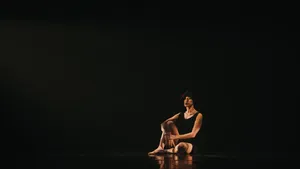
As a critic, I’ve had my issues with lighting design in dance, but sometimes I am caught up in effects that seem magical, that rivet my attention on a dancer, a movement, or even a windmill. So I asked Philly’s top lighting designers for a peek behind the curtain at how they make the magic.
Where does the light come from? The answer turned out to be “everywhere!” Dancers dash across the stage alone or in groups that scatter in every direction, so there are spotlights and sidelights and overhead lights and moving lights that don’t really move but pan and tilt, and even lights on the floor.
Lights can have filters in them: gobos, they’re called, little disks of painted glass or metal cut-outs that cast a silhouette like hand shadows on the wall. Some of them have pictures in them while others create effects, like cutting sharp edges in a beam of light or creating textures like ripples or branches.
Light is strange, though. Unless you are looking straight into the fixture (a bad idea) you don’t really see it. It’s always a reflection, off a body, or a set, or a white backdrop, called a cyclorama (cyc for short), or even a bit of mist in the air that the light can bounce off of. Dancers can glow on a darkened stage—light comes in from the sides, reflects off the dancers, sculpting their bodies before it passes invisible again into the wings.
From campfire to LEDs
Increasingly, LEDs have taken over from traditional lights: they are cheaper to run, they stay cool, and everything is programmed into them, so no more climbing up to the rafters to slot color gels in the overheads or set the focus. Even the gobos are in there, on a wheel that rotates from disk to disk that the designer can call up from the light console. They have a downside, though, as Peter Jakubowski pointed out: “LED warm is not that candlelit warm. You can’t pass thousands of years of us huddling from wild animals around a fire and now lose that color of warmth.” LEDs are getting better, though, and the important part is what you do with them.
Lighting Don Quixote
Philadelphia Ballet (our go-to company for full-length story ballets) fascinated me with its 2019 Don Quixote. A backdrop of clouds and mountains glowed behind the onstage town. That backdrop was painted in an ombre from reddish orange up to a paler yellow. Lighting designer Michael Korsch had to add lights for that sun-washed glow, however. Parts of the backdrop were translucent, so he set a row of lights on the floor to light it from behind. “And then I also had some lighting on the front, to kind of add to that glow,” he explained.
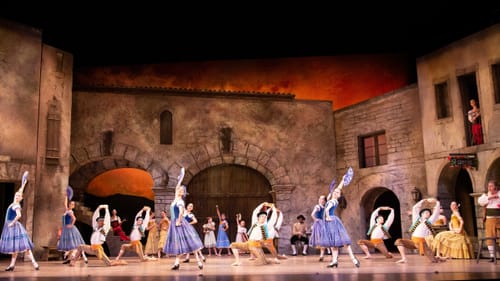
In Act 2, Korsch layered the light, adding texture to the windmill and the rocks with gobos. Sidelights in the wings illuminated the dancers while retaining the illusion of darkness. “It’s like a painting,” he said. “What do I have to do to keep that mountain in the background? What do I have to do to keep these trees in the foreground?”
Lighting Carmen
Angel Corella had been thinking about his 2023 ballet, Carmen, for a long time. He had a lot of ideas about how it should look, and he worked closely with lighting designer Nick Kolin. Unlike the usual elaborate sets, the ballet had just a few pieces—a bench, movable screens, a bed—and relied on the lighting to cue the scenes and propel the action. Gobos came to the rescue. Custom pieces acted as scene cards to cue the action. But how literal should they go?
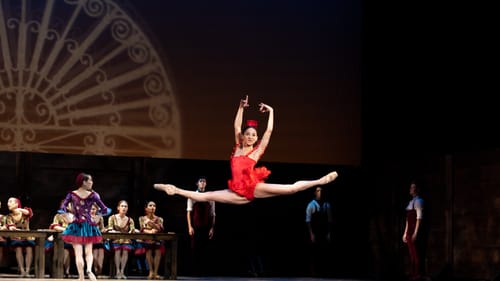
“If it gets too realistic, it can be distracting. It becomes like an illustration or a cartoon,” Kolin said. So they used symbols: a fan, a bull’s head, a cross told us that we were in Spain, at a bullfight, or in church. Or a prison: the “sunlight” streaming through Don José’s window passed through a gobo of the bars overhead, and another one gave the more elongated squares as the light hit the floor.
Creating story and feeling
Lighting designers set the mood and direct our attention in a big ballet, but light is often all the choreographer of a smaller piece has. The lighting designer has to guide us through the story, often on a bare stage.
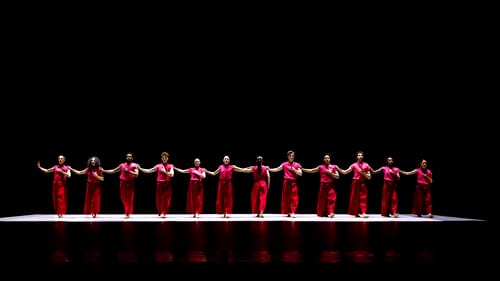
Korsch’s design for choreographer Takehiro Ueyama’s Heroes at BalletX’s 2024 Spring Festival was deceptively simple, he said. The ballet told the story of Japan’s rise to become an industrial powerhouse in stark images with the dancers in red, and he isolated each tableau in a square of intense light. “They were almost entirely very high-powered moving lights,” which are overhead lights that can tilt to point in different directions, he said. The stark geometric shapes gave the piece a blinding clarity, but there was almost always a little bit of sidelight as well and even the bounce light off the floor created some light on the dancers.
Designer Alyssandra Docherty said that she works with a feeling. “So whatever feeling comes out of the music and the movement, I try to make my light match that.” Much of Kun-Yang Lin’s 2022 Fish and Girl (set to Philip Glass) is a dream under the sea, and Docherty used gobos in a ripple texture on the sidelights to create the sense of water. But she said the lights didn’t move: “Dancers moving through the texture gave movement like waves.” Color added to the illusion. For the sea, the blue had a bit of green in it, and the sky had more white in the blue, for a crisper look. (You can learn more about Docherty in this BSR profile.)
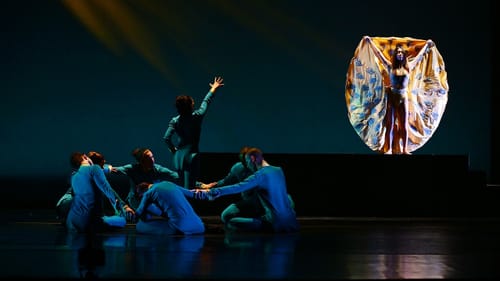
A well-lit muse
Roni Koresh’s 2022 Muse, also lit by Jakubowski, was a tribute to long-time company member Melissa Rector. I was fascinated by the opening: Rector sat in near darkness, gilded by an unseen light, her reflection glowing on the floor below her.
“Melissa and I have known each other for 25 years, plus? So, a lot of that whole piece was extremely personal, not only for Roni and Melissa but for me as well,” Jakubowski told me, which explains why it felt so intimate. The effect seemed simple, though: “Because the Marley [flooring] is plastic, it is reflective. So if you get the light bright enough on the body, and you don’t hit the floor, it reflects.” Jakubowski called Rector a treasure, and said, “That idea of illuminating her, and also, seeing herself within it, was really important for that start.”
Painting with light
The designers I talked with taught me a lot about the mysteries of lighting dance. I know now that side lights can sculpt the body in motion, and that you can create an ocean on a bare stage with some lights and a couple of pieces of punched metal. I know that it is all about collaboration to realize the choreographer’s vision, and you have to see the rehearsals and know the dance before you can light the stage.
But I learned even more about the designers: none of them paint, but they all talk about their work as painting the scene with light. And for all that the tools are technological, the work is driven by emotions: their own emotional responses to the music and the dancers, and the emotions they evoke and amplify in the audience. Every time I go looking for technology, I find poetry.
Sign up for our newsletter
All of the week's new articles, all in one place. Sign up for the free weekly BSR newsletters, and don't miss a conversation.

 Camille Bacon-Smith
Camille Bacon-Smith